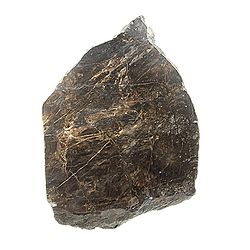| Galaxite | |
|---|---|
 Galaxite from the Kaso mine, Japan | |
| General | |
| Category | Oxide minerals Spinel group Normal Spinel structural group |
| Formula | MnAl2O4 |
| IMA symbol | Glx [1] |
| Strunz classification | 4.BB.05 |
| Crystal system | Cubic |
| Crystal class | Hexoctahedral (m3m) H-M symbol: (4/m 3 2/m) |
| Space group | Fd3m (no. 227) |
| Unit cell | a = 8.271 Å; Z = 8 |
| Identification | |
| Color | Black, red-brown, red to yellow |
| Crystal habit | Octahedra and rounded grains and exolution blebs |
| Twinning | Spinel law with {111} as both twin and composition plane |
| Cleavage | Indistinct to none |
| Fracture | Conchoidal to irregular |
| Tenacity | Brittle |
| Mohs scale hardness | 7.5 |
| Luster | Vitreous |
| Streak | Red-brown |
| Diaphaneity | Opaque; may be translucent in thin section |
| Specific gravity | 4.234 |
| Optical properties | Isotropic |
| Refractive index | n = 1.923 |
| Other characteristics | weakly to moderately magnetic |
| References | [2] [3] [4] |
Galaxite, also known as 'mangan-spinel' is an isometric mineral belonging to the spinel group of oxides with the ideal chemical formula Mn2+Al2O4. [5] It is sometimes used as a gemstone. [6]